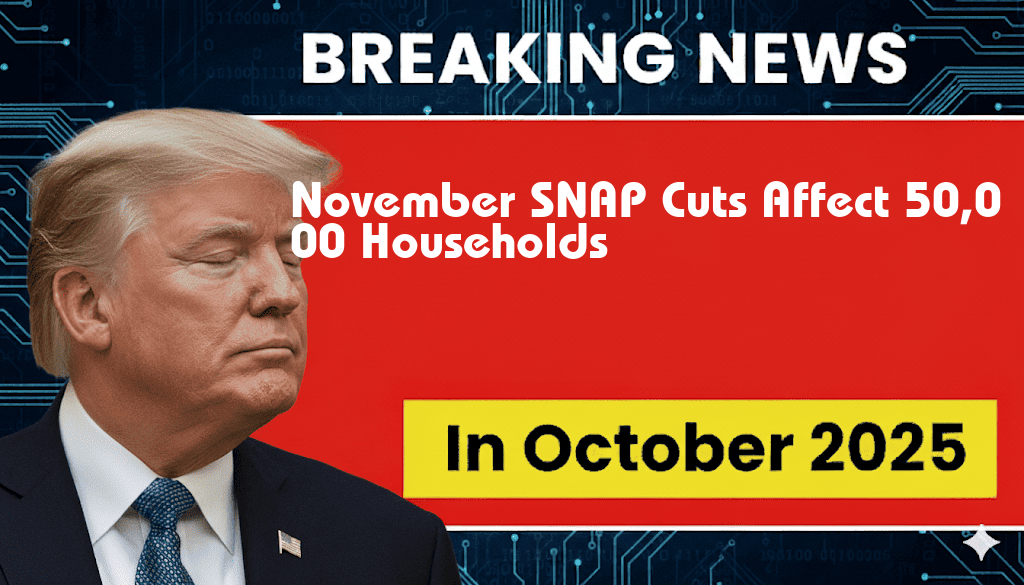In November 2023, approximately 50,000 households across the United States will experience a significant reduction in their Supplemental Nutrition Assistance Program (SNAP) benefits, with an average drop of $58 per month. This change comes as part of ongoing adjustments to the program aimed at managing federal budget constraints and addressing inflationary pressures that have affected food prices. The reduction has raised concerns among advocacy groups and affected families, many of whom rely heavily on SNAP benefits to ensure food security. As prices for essential groceries continue to rise, the impact of this cut could exacerbate food insecurity for vulnerable populations.
Understanding SNAP and Recent Changes
The Supplemental Nutrition Assistance Program, commonly known as SNAP, is a federal aid program designed to provide nutritional assistance to low-income individuals and families. The program has been instrumental in alleviating hunger and supporting household budgets, especially during economic downturns. The recent benefit reduction is a result of adjustments made in response to the ongoing economic climate.
Impact on Households
The $58 reduction in benefits is expected to create significant challenges for many families. According to the USDA, SNAP benefits are calculated based on various factors, including household size and income. For many recipients, this reduction means less flexibility in their monthly budgets, forcing them to make difficult choices regarding food purchases.
- Increased Food Prices: The cost of groceries has surged, making it difficult for families to stretch their limited resources.
- Rising Food Insecurity: The reduction may lead to increased food insecurity, particularly among families with children.
- Local Responses: Food banks and community organizations are bracing for an increase in demand as families seek assistance.
Reactions from Advocacy Groups
Advocacy organizations are voicing their concerns regarding the reduction in SNAP benefits. Many argue that the cut comes at a time when food prices are at historic highs, exacerbating the challenges faced by low-income households. Groups such as the Food Research & Action Center (FRAC) and the Center on Budget and Policy Priorities (CBPP) are urging lawmakers to reconsider these cuts and explore alternatives that would better support those in need.
Statements from Advocacy Groups
Leaders from various organizations have provided statements highlighting the potential consequences of the benefit reduction:
- FRAC: “Reducing SNAP benefits undermines the program’s effectiveness in combating hunger, especially as food prices continue to rise.”
- CBPP: “The decision to cut benefits at this time is short-sighted and will disproportionately affect the most vulnerable members of our society.”
Future Considerations
The reduction in SNAP benefits raises important questions about the future of food assistance programs in the U.S. As inflation continues to impact food prices, policymakers may need to evaluate the adequacy of SNAP benefits and consider adjustments that align with current economic realities. Additionally, discussions around the long-term sustainability of such programs are becoming increasingly relevant.
Potential Policy Responses
Experts suggest several potential avenues for policymakers to explore in addressing food insecurity:
- Adjusting Benefit Levels: Reassessing how benefit levels are calculated to better reflect the cost of living.
- Expanding Access: Streamlining application processes and expanding eligibility criteria to include more low-income families.
- Investing in Local Food Systems: Supporting local agriculture and food distribution networks to enhance food access.
Conclusion
The $58 SNAP benefit reduction affecting 50,000 households in November highlights the ongoing challenges of food insecurity in the U.S. Advocacy groups are calling for immediate action to mitigate the impact of these cuts, emphasizing the need for a comprehensive approach to support low-income families during these difficult economic times. As the situation evolves, it will be crucial for both state and federal governments to monitor the effects of this reduction and consider responsive measures.
For more detailed information on SNAP benefits and recent changes, visit USDA SNAP, or learn more about food insecurity from FRAC.
Frequently Asked Questions
What is the reason for the $58 SNAP benefit reduction in November?
The $58 SNAP benefit reduction is due to adjustments made by the government in response to changes in economic conditions and budgetary constraints affecting the Supplemental Nutrition Assistance Program.
How many households are affected by this reduction?
Approximately 50,000 households are facing the impact of the $58 reduction in their SNAP benefits this November.
What can affected households do to cope with the reduction?
Affected households may seek assistance from local food banks, community organizations, and resources that provide nutritional support to help mitigate the effects of the reduced SNAP benefits.
When will the SNAP benefit reduction take effect?
The SNAP benefit reduction will take effect in November, impacting monthly benefits for eligible households starting from that month.
Are there any plans to restore the SNAP benefits to their previous levels?
Currently, there are no specific plans announced to restore the SNAP benefits to their previous levels, but advocacy groups are working towards addressing the needs of affected households.
